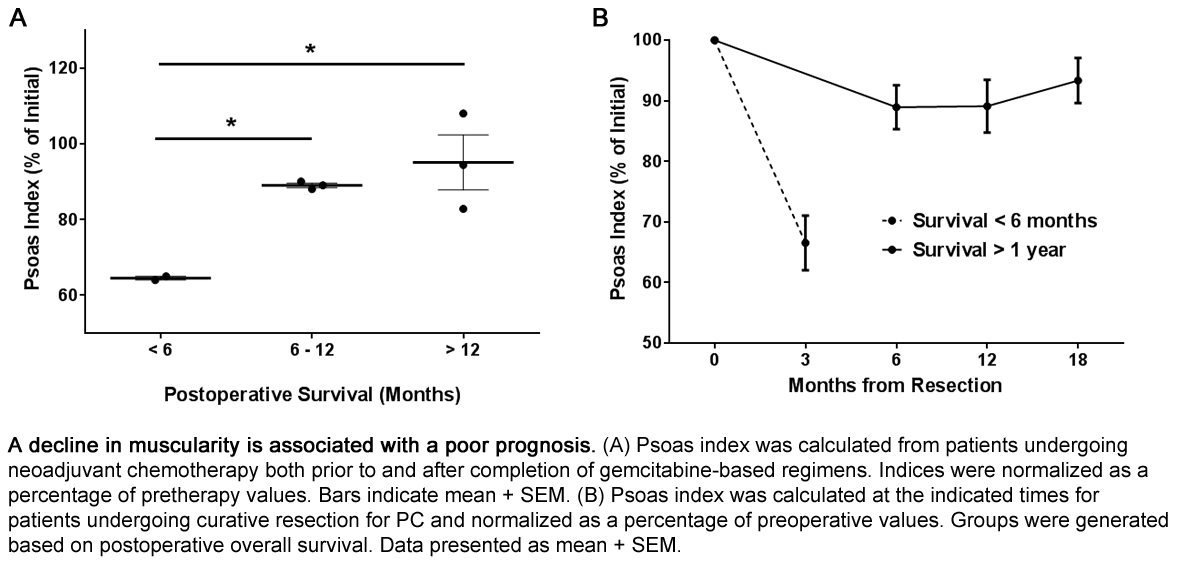D. Delitto1, S. M. Judge1, R. L. Nosacka1, T. J. George1, S. M. Wallet1, G. A. Sarosi1, R. M. Thomas1, K. E. Behrns1, S. J. Hughes1, A. R. Judge1, J. G. Trevino1 1University Of Florida,Gainesville, FL, USA
Background: The relationship between myopenia, nutritional status, and long-term oncologic outcomes remains incompletely defined in patients with resectable pancreatic cancer (PC). Additionally, more advanced technologies to quantify myopenia, including complex volumetric analysis and densitometric algorithms, are not always available in the clinical setting. We sought to reliably quantify prognostic indicators of preoperative cachexia as a predictor of clinical outcomes with routine imaging applicable to any office or hospital site.
Methods: Preoperative CT scans were electronically available and suitable for analysis in 73 of 82 consecutive patients with PC undergoing pancreaticoduodenectomy (PD) between November, 2010 and February, 2014. The psoas index was computed from cross-sectional areas of psoas muscles normalized to vertebral body area at L3. Correlation and proportional hazards analyses were performed to identify relationships between muscularity, preoperative nutritional markers, clincopathologic parameters and long-term survival.
Results: Psoas index correlated strongly with preoperative hemoglobin and albumin levels (P = .001 and .014, respectively), identifying a pattern of preoperative frailty. High psoas index, albumin and hemoglobin levels significantly correlated with improved long-term survival (HR 0.014, P < .001; HR 0.43, P < .001 and HR = 0.80, P = .014). However, on multivariate analysis, psoas index proved to be the only independent predictor of survival (HR 0.021; P = .003). Notably, rapid declines in psoas index during neoadjuvant chemotherapy were associated with poor postoperative outcomes, as were declines in psoas index during the postoperative period.
Conclusions: The data indicate that the psoas index, a measurement available in any clinical setting, is a statistically powerful predictor of survival in PC, when compared to tumor grade and stage as well as previously validated nutritional parameters.
